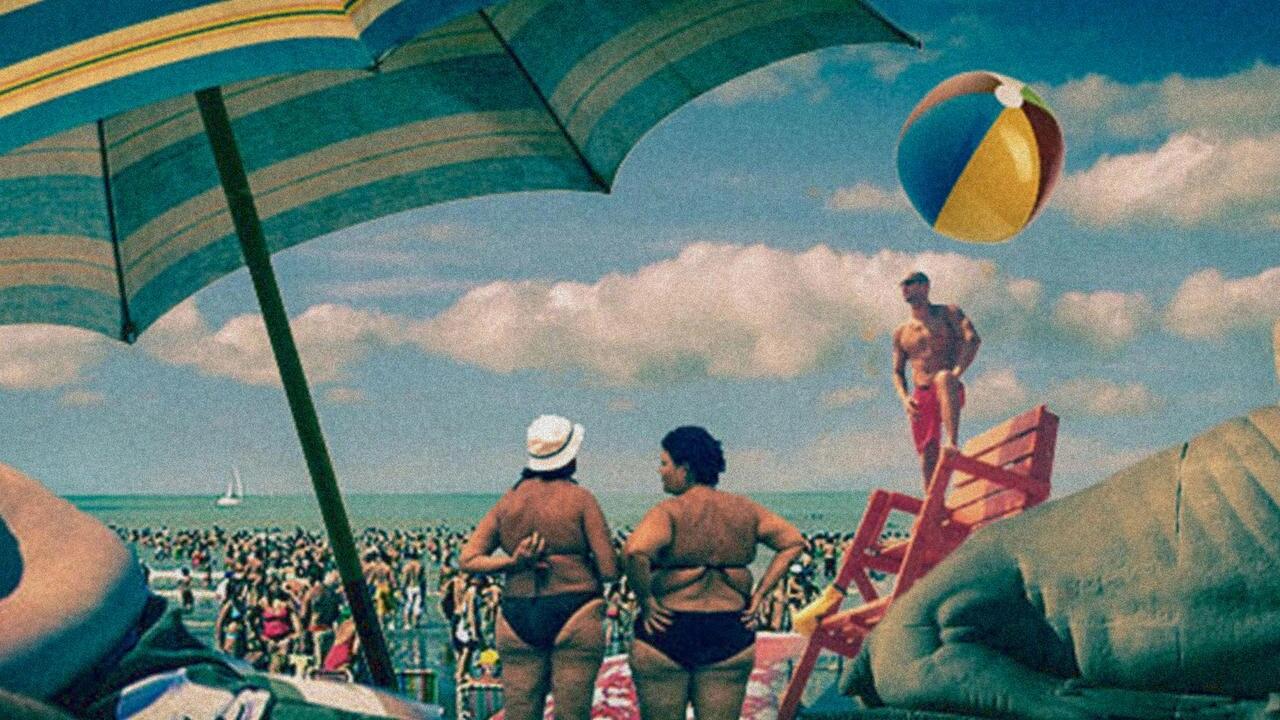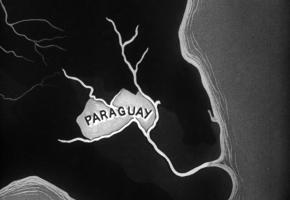This gem was writer/director Mariano Llinás’ first step into the world of film. Fascinated by whole towns that sprang up, somewhat incongruously along the beaches of ‘la costa,’ he began to study and film, this particular part of the Atlantic coast of the province of Buenos Aires.
For most of the year, these towns remain empty, abandoned and deserted, only to spring to life with a manic vengeance for a short spell in the summer holidays, (December to March) when they are transformed overnight by hordes of people descending on them with their families.
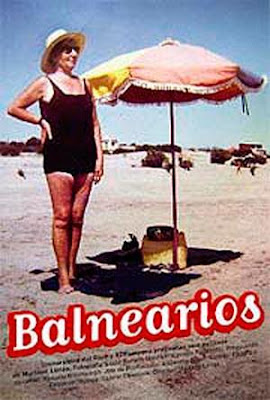
The film ‘Balnearios’ develops as a series of ‘chapters’, starting on the beach resorts. We are shown wonderful early 20th Century archive footage in 8mm and 16mm from the 30s, 40s, 50s 60s and 70s, as well as new footage from the turn of the millennium. The cinema vérité effect is powerful, as the skies and the colours are more technicolour that real, reflecting the somewhat surreal existence of the resorts themselves.
Mariano Llinás says he was fascinated by: -
“…The idea of a number of towns created solely for people to be able to bathe in the sea. The sea, always associated with adventures, mysteries, storms and journeys is transformed into a domestic and familiar entity, celebrated with buildings and promenades, as if in a sanctuary… I like to think that the sea is ever present, hidden in every one of the fragments of the film, be it in Miramar, [that is] submerged in a lake, to the municipal ‘Mediterranean’ beach resorts in the [inland] provinces, the excessive blows of [the artist] Zucco and the mysterious obsession of Señor G. They all follow the sea, and are inconceivable without it.”
This is not a conventional documentary. It feels more like an album of strange stories, and humorous observations of people and events, in resorts that are dedicated exclusively to the pursuit of leisure. With his sharp eye for a story, ‘Balnearios’ almost comes across as a prologue for his subsequent film ‘Extraordinary Stories (2008)’.
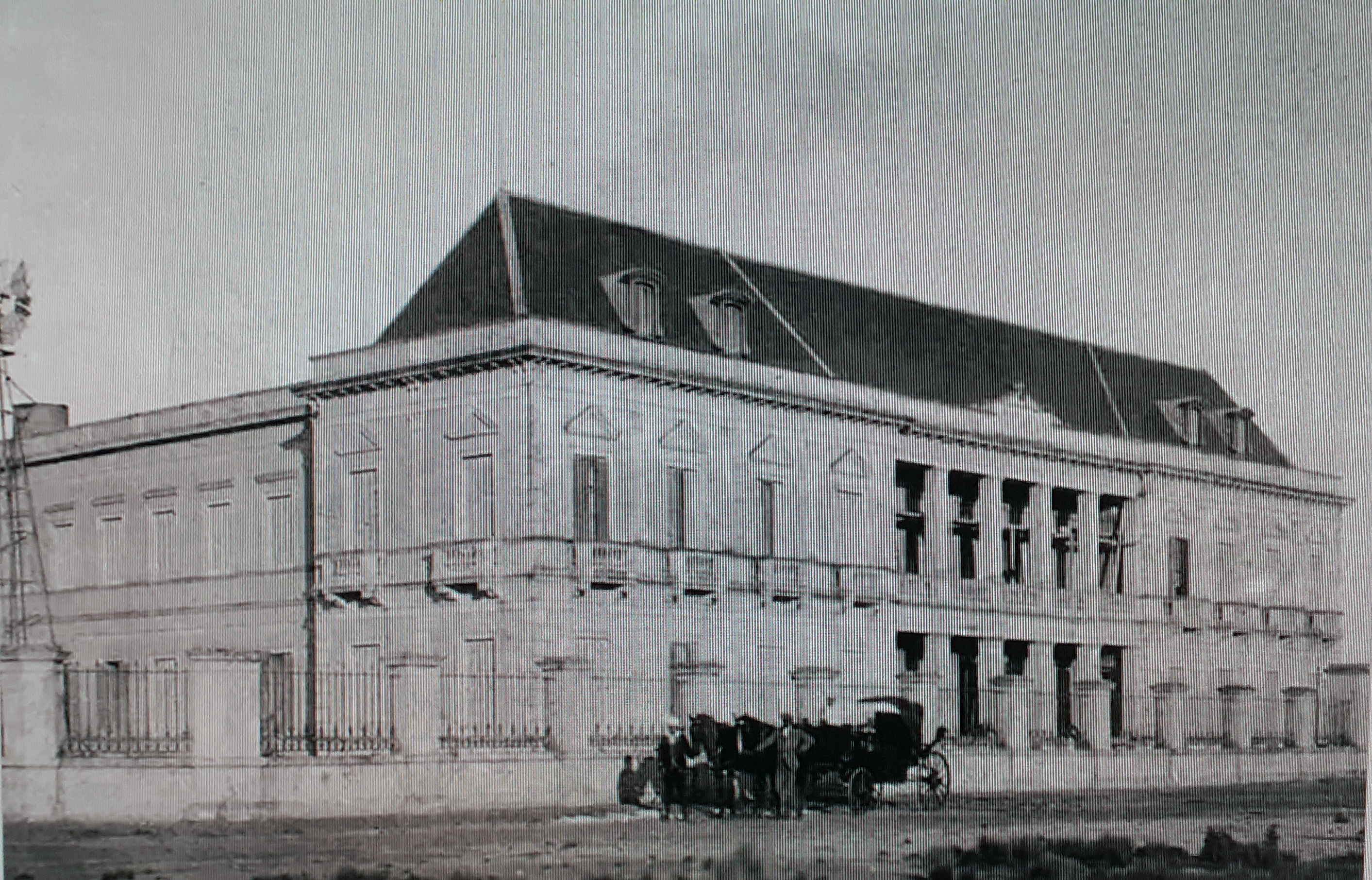
Hotel in Mar del Sur
In ‘Balnearios’, Llinás uncovers fascinating mysteries, stories worthy of a film in their own right. Being a documentary, everything is true, but at times does not appear to be so, as stories emerge that could have come from a horror movie, like the complex tale of betrayals, fraud and obsession that lurks behind the close shutters of one large abandoned hotel.
In the resort of ‘Mar del Sur’, in a town where almost nobody lives, the Voice Over narrates this sad tale behind the façade of the anachronistic hotel. Eerily, as we listen to the story, serenaded by Stephan Grapelli on the soundtrack, we hear how the building is haunted with the ghosts of a young Señor G., who carefully charms (while equally carefully swindling) a group of businessmen into accidentally ‘giving’ him and his French singing wife total ownership of the building. Sr G and his wife win the various attempt to evict them but then live in an almost hermetic isolation. Later, after Sr G. is abandoned by his wife, he, in turn, is himself defrauded by an unscrupulous lawyer. Then crime takes over, with a baker being murdered for wanting to reveal the dirty goings on! Those closed and faded shutters hide stories no one could have dreamt of.
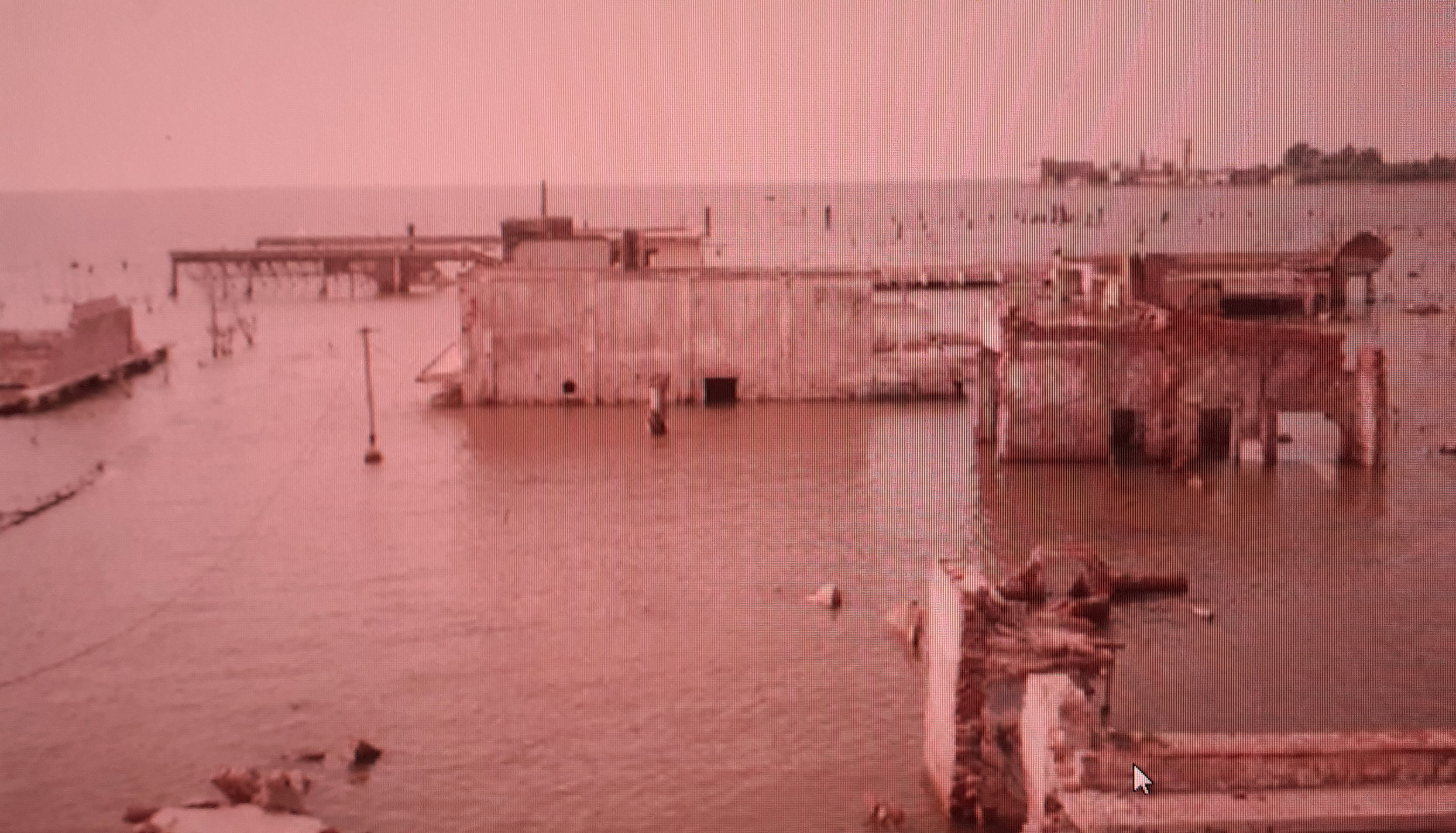
Flooded town of Miramar
Another of these quiet resort towns, ‘Miramar’, hides another secret. On May 17th 1978, the original town was mysteriously submerged by the waters of the lake. The inhabitants thought it was a normal flood, but the waters of the Laguna Mar Chiquita never receded thus permanently submerging shops, homes and businesses. Dead trees, chunks of dilapidated buildings poke out of the waters like out of a grave. This was no deliberate reservoir, for the waters are salty, and the streets and avenues disappear unceremoniously into the deep, as old service station pump hose floats about spookily beneath the waves.
Another interesting story that Llinás developed is that of an eccentric and colourful painter Zucco, who lives inland, far from the sea, but is somewhat obsessed by it and creates steel sheet cut out shapes of Poseidon, mermaids and whales to place near the local lake and rivers.
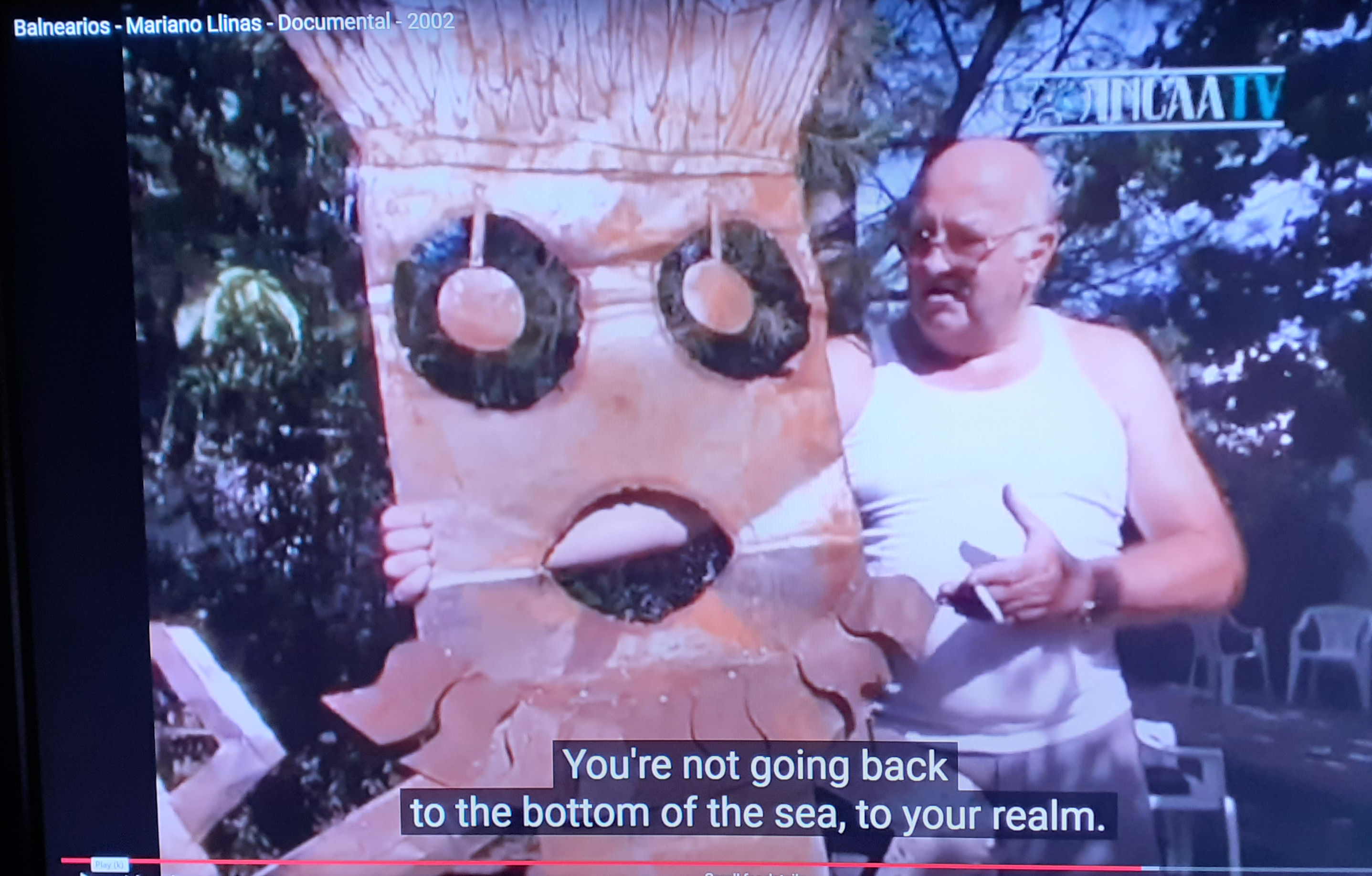
Mariano Llinás was born in Buenos Aires in February 1975, so he was only ten when the Dirty War in Argentina was in full swing. Yet he is the key screenwriter for the 2023 Oscar nominated ‘Argentina 85’ that aims to show why and how it was necessary to fight for democracy.
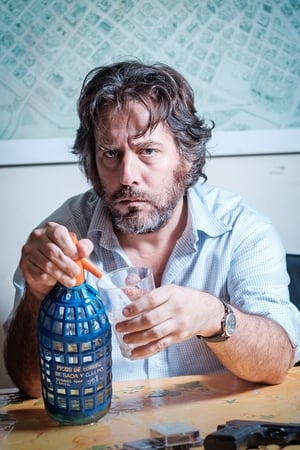
Mariano Llinás
Much like in Balnearios, Llinás wanted: - “Not to offer conclusions or truths, but to provoke thought”
A graduate from the Universidad del Cine, Argentina where he now teaches, Llinás is also known for ‘La Flor (2018)’ that lasts 14 hours (divided into 6 episodes) that holds the record for the longest non-experimental movie in the history of film. There is nothing conventional about this director!

‘Balnearios (2002)’ can be watched on Amazon Prime to rent (£3.49)
or free, on YouTube https://youtu.be/MMPss_G8WEg
CREDITS:
‘Balnearios 2002’- In Spanish with English subtitles.
Director Mariano Llináx/ Producer Manuela Willimburgh/ DOP Lucio Bonelli and Martin Mohadeb/ Sound Federico Esquerro/ Sound editor Fernando Ribero / Editor Agustín Rolandello and Nicolás Goldbart/ Original Music Gabriel Chwojnik/ Song “La Grande Maison sur la mere” performed by Astrid Lund Petersen.
Archival Material from the 1930s, 40s 50s 60, and 70s shot on 8mm and 16mm, y Julio Llinás, Cesáreo Navajas Centeno, Carlos Alfredo Zemborain. Carlos Varesini y Juan Anchorena


